Description
CROWN POLYFILLA INTERIOR USES
Plaster Work:
Crown Polyfilla is best for cracks in plaster, joints in plaster boards, cracks between plaster and woodwork, making good round pipes etc. When dry, Crown Polyfilla will take nails or screws without breaking away under light loads and can be used to plug walls for lightweight domestic fixtures. Polyfilla is ideal for use where there is vibration. Due to its unique formulation, it will withstand normal contraction and expansion of the wall surface and will not crack or fall out.
Woodwork:
For filling cracks in woodwork and defective paintwork, between floorboards, for filling joints, not holes, screw holes, cut-outs of removed locks, handles etc.
Interior Brick & Cement Work:
For filling interior brick work, for smoothing rough cement work without need for keying, for Leveling up walls for tiling, for skimming expanded Polystyrene and asbestos for easy painting.
Special uses:
Crown Polyfilla can be used as plaster texture paint. It can be used as a filler/adhesive for fixing mineral fibre acoustic tiles to ceilings and spot fixing plaster board panels to walls. Mixed with mineral wool, Polyfilla can be used for pipe lagging in awkward places. It is also ideal for repairing plaster ceilings mouldings. Polyfilla is an excellent modeling material, suitable for use by artists and sculptors and is widely used in schools and art colleges etc.
Exterior Woodwork:
Where Polyfilla is required to be used on exterior surfaces or on areas liable to come into contact with water – i.e. behind sinks, baths, etc. it can be used to make up Swedish Putty™. Add a minimum of 10% gloss paint to a stiff Polyfilla paste and mix well. On wood Polyfilla should be applied directly to the bare, sound, dry wood and not over the primer. Other surfaces should be dry and impervious to water. When dry the Polyfilla and all porous surfaces around it must be protected from water by the sound oil paint or varnish system. Otherwise excessive wood movement and deterioration may occur. Exterior brick work, plaster etc, is best repaired with a sand/cement mixture (preferably with the addition of a P.V.A. bonding agent) or filled with a proprietary exterior filler/sealant.
Mixing:
Crown Polyfilla is extremely easy to mix by adding approximately two volumes of Polyfilla to one of water and mixing thoroughly. A slightly stiffer mix can be used when filling deep cracks and holes and on very absorbent surfaces. For wood grain filling a little more water can be added to produce a creamy consistency, which can be brushed on. For filling cracks on walls, prior to the application of emulsion paint, Polyfilla can be thinned with the paint – this will assist obliteration by the paint. Nail heads, unless of a non-rusting nature, should be primed with a metal primer or oil paint before applying this crown Polyfiller.
FILLING
Cracks and cavities do not require being wet or primed before filling. Simply brush out any loose dust, old paint or other contamination and press in the crown Polyfiller paste firmly with a filing knife (slightly round of the surface) and smooth off. Deep cracks are best filled in stages to enhance hardening. The filled area, once dry, should be sandpapered with fine abrasive paper ready for painting.
Avoid the use of low-quality filling materials
The use of Plaster of Paris or low-quality fillers should be avoided, as these products are likely to crack and fall out. In particular, these types of materials are extremely powdery, therefore offering inferior bonding characteristics to the substrate combined with poor adhesion to the paint finish.
This polyfilla is available from Rangi Paint Store and other crown paints stockists within Nairobi.

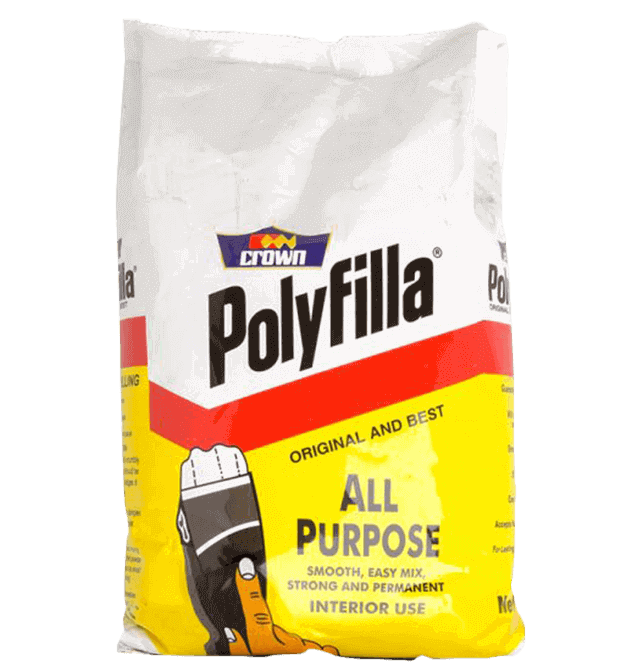
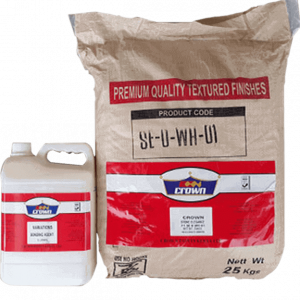
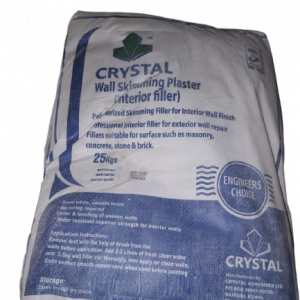
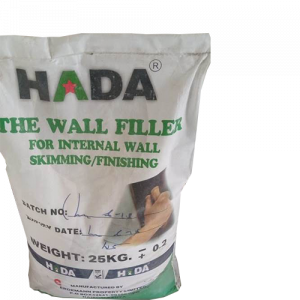
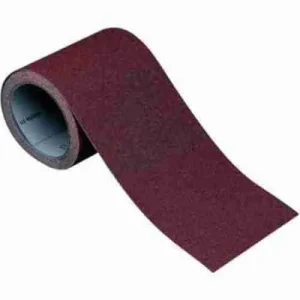
mainah –
best polyfilla in the market